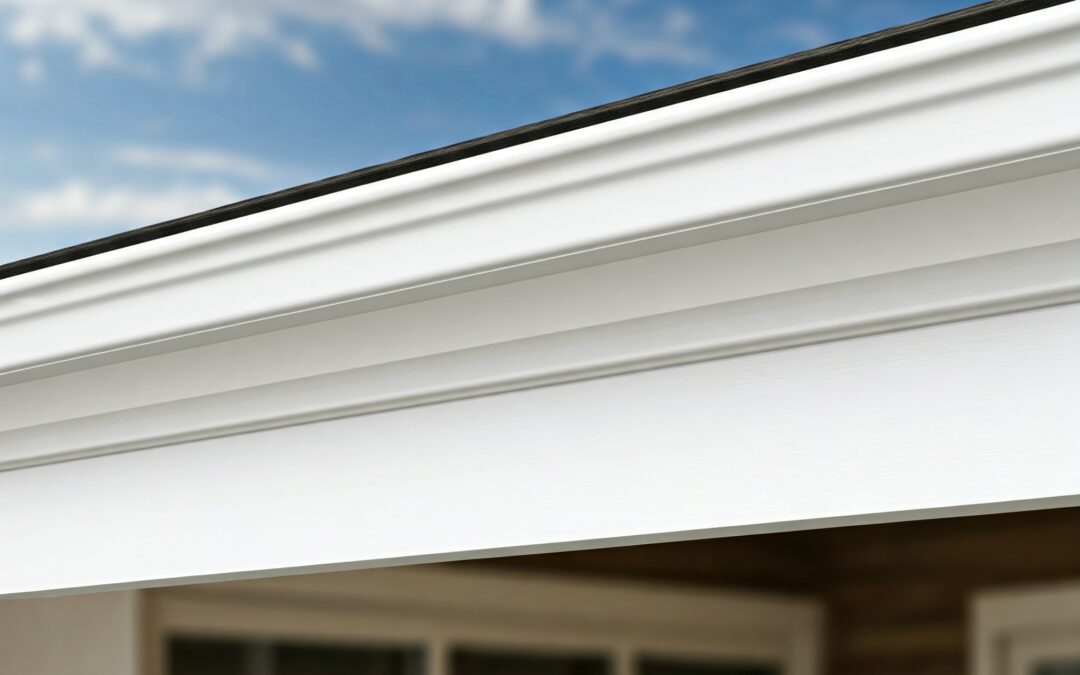The roof fascia might not be the first thing you notice on the house, but it plays a vital role in keeping your home protected and looking polished. Positioned just below the edge of your roof, fascia boards support your gutters and shield the exposed ends of roof rafters from the elements. In simple terms, it’s what helps rainwater flow smoothly into the gutters and keeps your roofline looking tidy.
Choosing the best material for your roof fascia isn’t just about appearance—it’s about durability, ease of maintenance, and suitability for your local climate. In Vancouver, for example, the city’s wet winters make materials like aluminum and vinyl particularly popular because they resist moisture and require minimal upkeep. According to Gentek, aluminum fascia stands out for its durability and corrosion resistance, making it a smart choice for homeowners in Canada’s rainy regions.
In this guide, we’ll walk you through the best materials for fascia boards, helping you decide on the right option to enhance your home’s curb appeal and withstand Vancouver’s unique weather challenges.
What Is Roof Fascia and Why Is It Important?
The roof fascia is a long, horizontal board that runs along the edge of your roof. It’s a key part of your roof system, providing both functional and aesthetic benefits. Positioned where the roof meets the outer walls of your house, the fascia supports the gutters and helps keep your home safe from water damage by directing rainwater into the drainage system.
But the fascia’s role doesn’t stop there. It also protects the edges of your roof from weather exposure, keeping out moisture, pests, and debris. Without strong and durable fascia boards, the roof rafters and the interior of your home could be at risk of damage.
In addition to its protective role, the fascia gives your home a polished look. Choosing the right fascia colours can complement your house’s exterior design, boosting curb appeal. Whether you’re considering a replacement or exploring the best materials, the fascia on your roof plays a big part in both the style and structure of your home.
In cities like Vancouver, where heavy rain is common, having well-maintained fascia is even more critical. A strong fascia helps ensure your gutters function properly, which is essential for preventing water damage to your home. By choosing the right material and maintaining it, you can protect your home and extend the lifespan of your roof.
Factors to Consider When Choosing Roof Fascia Materials
Selecting the right material for your roof fascia is a decision that goes beyond appearance. It’s about finding a balance between durability, maintenance, and cost while ensuring your home looks great. Here are the key factors to keep in mind when choosing the best material for your fascia boards:
1. Durability
Your fascia is exposed to harsh weather conditions like rain, wind, and sun. Choosing a material that can withstand these elements is crucial, especially in a city like Vancouver, where heavy rainfall is common. Options like aluminum and fiber cement are known for their long-lasting strength, making them ideal for the wet climate.
2. Maintenance
Different materials require different levels of upkeep. Wood, for instance, may need regular painting and sealing to prevent rot, while vinyl or aluminum fascia is low-maintenance and easy to clean. Consider how much time and effort you’re willing to put into maintaining the fascia on your roof.
3. Aesthetics and Fascia Colours
Your fascia contributes to your home’s curb appeal. Materials like vinyl and composite come in a variety of fascia colours, allowing you to match or contrast with your roof and siding. If you’re going for a modern look, aluminum’s sleek finish might be the perfect fit.
4. Cost
Budget is always an important consideration. Wood is often more affordable upfront but may cost more over time due to maintenance needs. On the other hand, materials like fiber cement and PVC have higher initial costs but offer better longevity and lower maintenance expenses.
5. Climate Suitability
Not all materials perform well in every climate. For instance, wood may not be the best choice in Vancouver’s rainy conditions unless it’s treated properly. Aluminum and vinyl are better suited to handle moisture, making them reliable options for fascia replacement in wet climates.
By weighing these factors, you can choose the roof material that not only suits your budget but also enhances the durability and appearance of your home. Take the time to assess your needs and consult a professional if you’re unsure about the best material for your fascia boards.
7 Best Materials for Roof Fascia
When it comes to choosing the right material for your roof fascia, it’s important to find a balance between durability, maintenance, and style. Here’s a closer look at some of the best options to help you make the right decision for your home:
1. Wood Fascia Boards
Wood has long been a favorite for its natural, timeless look. It’s easy to customize with paint or stain, making it ideal if you want to match your fascia with your home’s exterior. However, in wet climates like Vancouver, untreated wood can rot or warp over time, so regular maintenance is a must.
2. Vinyl Fascia Boards
Vinyl is a practical, low-maintenance choice that resists moisture and pests. It’s lightweight, easy to install, and comes in a variety of fascia colours, giving you plenty of design options. On the downside, it may become brittle in extremely cold weather, which could be a concern during Vancouver winters.
3. Aluminum Fascia Boards
Aluminum is highly durable and rust-resistant, making it a smart option for areas with heavy rainfall. It’s lightweight, available in multiple colours, and requires very little upkeep. While it costs more than wood or vinyl, its long lifespan makes it a great investment for fascia on roof.
4. Composite Fascia Boards
Composite fascia is a modern solution combining wood fibers and plastic. It offers the warmth of wood with added durability, resisting rot and insect damage. Composite fascia is low-maintenance and long-lasting, though it does come at a higher price point compared to other materials.
5. Steel Fascia Boards
If durability is your top priority, steel is worth considering. It’s ideal for withstanding harsh weather and offers a clean, contemporary look. However, it’s heavier than other options and may require protective coatings to prevent rust, especially in Vancouver’s rainy climate.
6. Fiber Cement Fascia Boards
Fiber cement is a reliable choice for homeowners seeking a durable and low-maintenance option. It’s resistant to fire, moisture, and pests, making it perfect for wet environments. While heavier and more expensive than vinyl or wood, fiber cement can be painted to suit your preferred fascia colours.
7. PVC Fascia Boards
PVC is another low-maintenance material that resists water and pests, making it a great choice for Vancouver homes. It’s versatile, lightweight, and comes in various styles to match your home’s design. However, PVC can be pricier than vinyl and may not hold up as well in extreme cold.
Thoughts on Roof Fascia Materials
Each material for your roof fascia offers unique benefits, whether it’s the classic look of wood, the low-maintenance nature of vinyl, or the durability of aluminum. The key is to choose a material that suits your home’s design, climate, and maintenance preferences.
However, even the best materials won’t last forever. Over time, wear and tear can take a toll on your fascia boards. Knowing when to replace them is just as important as choosing the right material in the first place. If you’re unsure whether it’s time for a fascia replacement, check out these 7 important signs that it’s time to replace your fascia and soffit here. This guide can help you spot issues early and take action before they lead to bigger problems.
By staying informed and proactive, you’ll not only protect your roof but also ensure your home remains beautiful and secure for years to come.
Comparing Roof Fascia Materials: Pros and Cons
Choosing the right material for your roof fascia depends on factors like durability, maintenance, cost, and aesthetics. To make your decision easier, here’s a simple breakdown of the pros and cons of the most popular fascia board materials:
1. Wood Fascia Boards
- Pros: Natural look, customizable with paint or stain, widely available.
- Cons: Prone to rot and insect damage, requires regular maintenance, less durable in wet climates like Vancouver.
2. Vinyl Fascia Boards
- Pros: Moisture-resistant, low-maintenance, available in various fascia colours, affordable.
- Cons: Can crack in extremely cold weather, limited lifespan compared to other materials.
3. Aluminum Fascia Boards
- Pros: Lightweight, rust-resistant, low-maintenance, available in many colours.
- Cons: Higher upfront cost, less sturdy against physical impact compared to steel.
4. Composite Fascia Boards
- Pros: Combines durability and style, resistant to rot and insects, low-maintenance.
- Cons: Expensive, fewer design options compared to wood or vinyl.
5. Steel Fascia Boards
- Pros: Extremely durable, fire-resistant, ideal for harsh weather conditions.
- Cons: Heavy, higher cost, may need treatment to prevent rust in moist environments.
6. Fiber Cement Fascia Boards
- Pros: Long-lasting, resistant to moisture and pests, can be painted to suit your home.
- Cons: Heavy, expensive, and requires professional installation.
7. PVC Fascia Boards
- Pros: Waterproof, pest-resistant, easy to clean, available in a variety of styles and fascia colours.
- Cons: Can be more expensive than vinyl, less flexible in extreme cold.
Making the Right Choice
Each material has strengths and weaknesses, so the best choice depends on your home’s needs, budget, and local climate. For example, in rainy cities like Vancouver, moisture-resistant options like aluminum or vinyl might be better suited for fascia on roof. By weighing these pros and cons, you can choose a material that keeps your roof protected and your home looking its best.

CONCLUSION:
Choosing the right material for your roof fascia is more important than you might think. It’s not just about making your home look good—it’s about protecting it from rain, pests, and wear over time. With options like wood, vinyl, aluminum, and more, each material offers unique benefits depending on your budget, style, and the climate you live in.
For homeowners in Vancouver, where the weather can be wet and unpredictable, moisture-resistant materials like aluminum or vinyl might be the smartest choices. These materials require less maintenance and last longer in a damp environment. Meanwhile, if you’re after a classic look, wood fascia boards could work—but be prepared for regular upkeep.
Ultimately, the right fascia on your roof can enhance your home’s curb appeal while keeping it protected. If you’re unsure which material to choose, consult a roofing professional to find the best option for your needs. With the right decision, you’ll ensure that your home remains both beautiful and secure for years to come.

